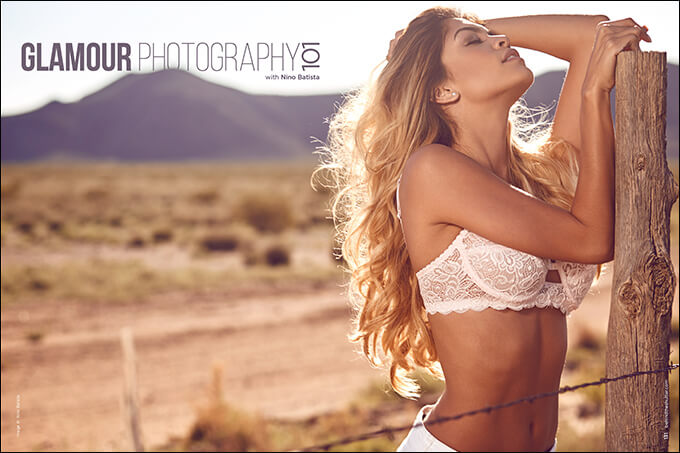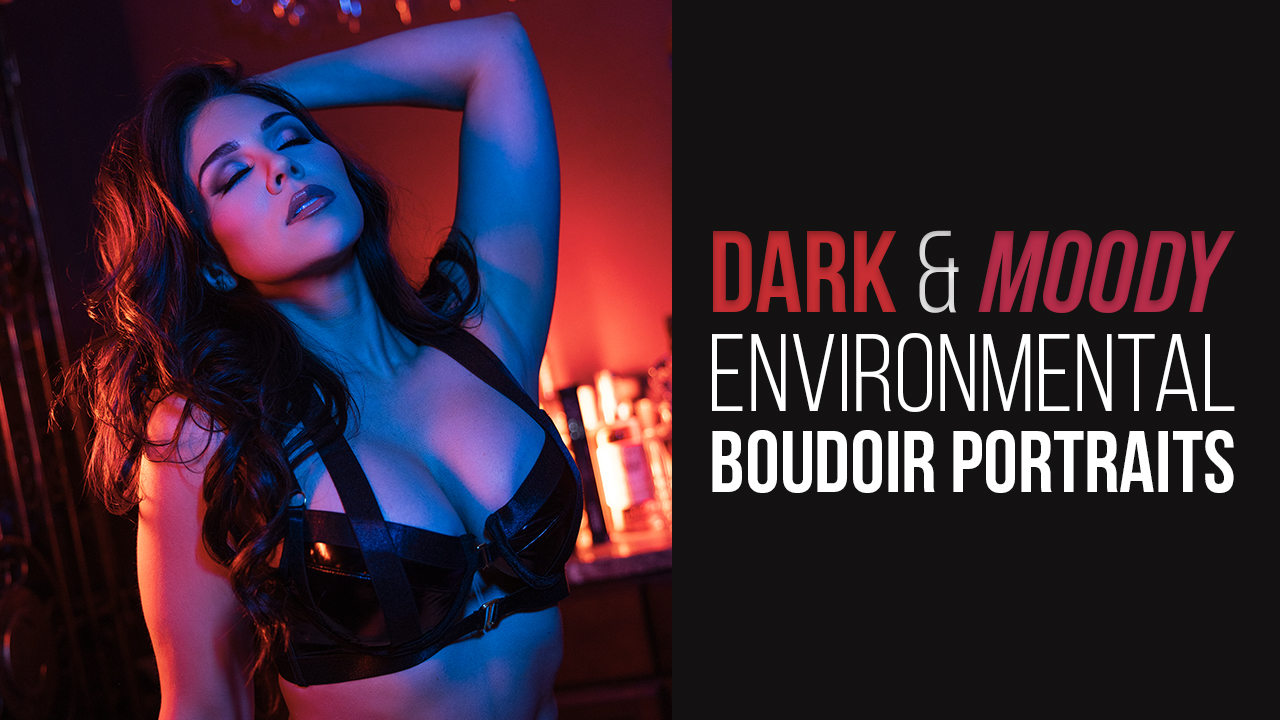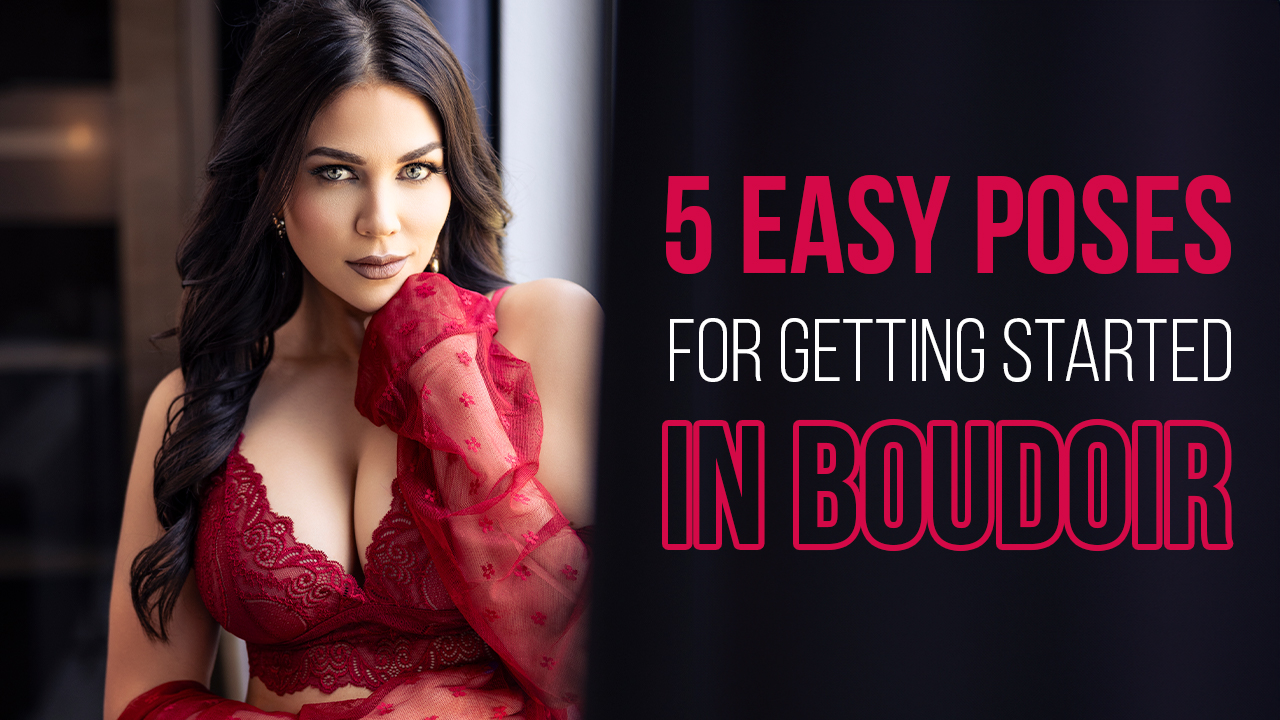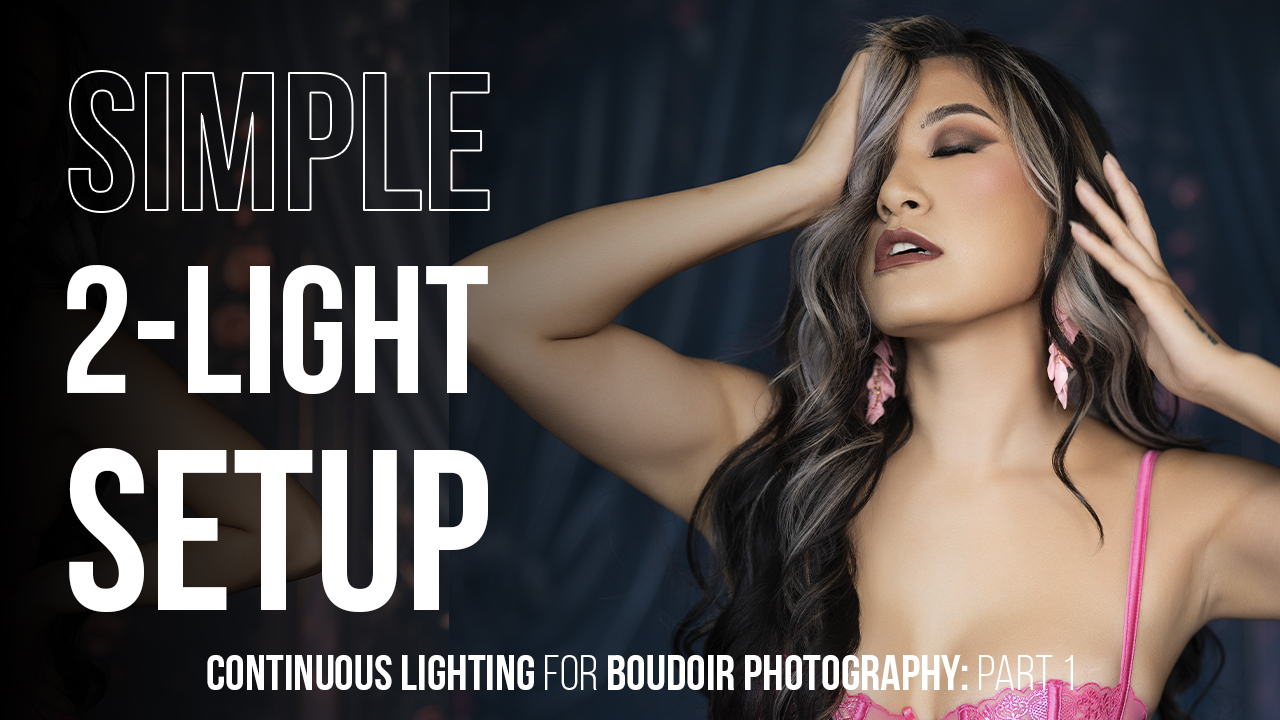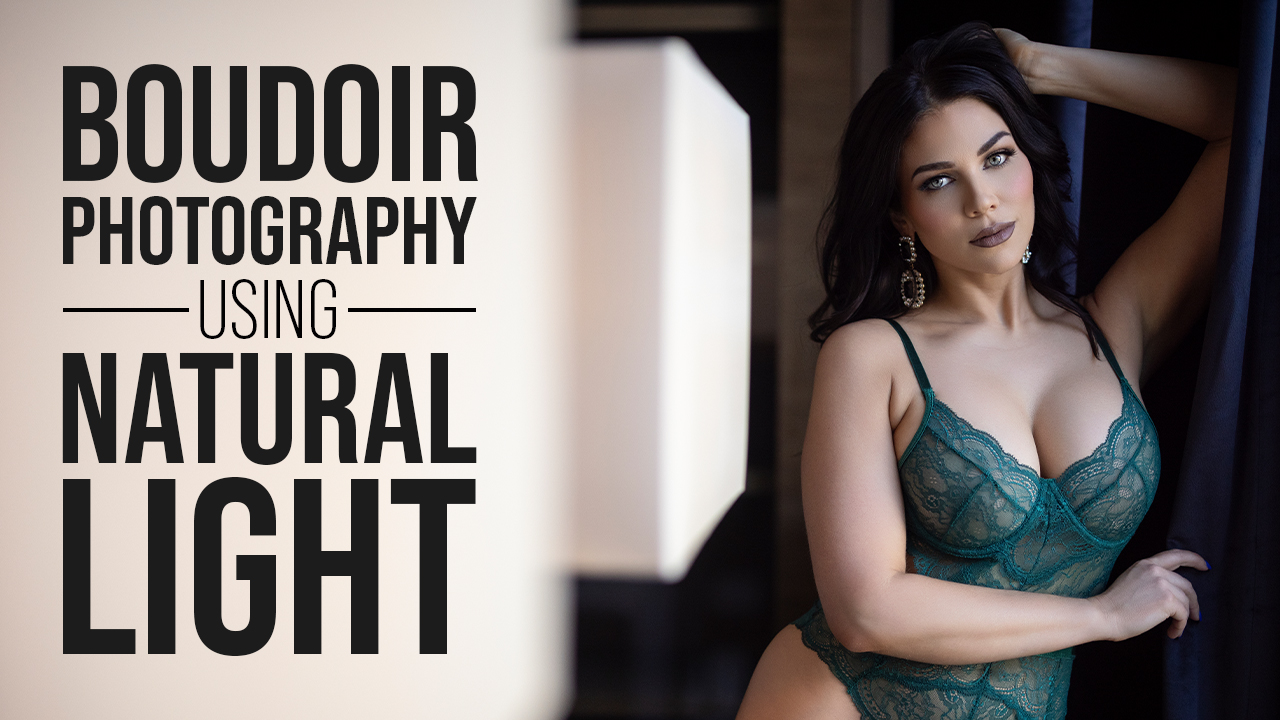Glamour Photography 101 with Nino Batista
Want more information on this article? Get access to video content and additional supporting images. Launch the January issue of the magazine by logging in or signing up for a free account by clicking here. Shutter Magazine is the industry’s leading professional photography magazine.
There has always been disagreement on the definition of glamour photography. While art is subjective, the modern-day definition that’s most embraced goes something like this: The focus of glamour is on the model, the subject, with a strong sensual tone and aesthetic.
Basically, glamour is about beauty, style, strength, sex, allure and energy. Glamour images are designed to elicit a response, whether positive or critical. They create a sense of unfiltered fantasy. As I try to remind everyone I teach, glamour is not necessary, as it were, but then most art never is.
So how do you go about creating glamour images? It would seem simple enough. Find a beautiful subject, have her look all sexy into the lens, and snap away…right?
If only. In fact, there are few genres of portraiture with worse amateur images than glamour. Nothing in portrait photography is more cringeworthy than a tasteless, poorly executed (and often crass) glamour photo. Sadly, you see it all the time. The appeal for (mostly male) photographers to photograph beautiful models in various states of undress is strong, which sustains the ever-present inundation of wannabes and GWCs (“guys with cameras”) in the genre. So while the genre is filled with plenty of click-happy shooters, the vast majority do more to hurt the reputation of glamour than help it. Meanwhile, the rest of us have to suffer the stigma while trying to make a legitimate go at a career in it.
Creating glamour images requires, first and foremost, one’s tongue planted firmly in cheek. Do not take yourself so seriously that you forget glamour is supposed to be exciting, fun and arousing (I’m generalizing, but stay with me here). You’re trying to create scintillating, sexualized images, and you need to be honest with yourself about that right up front.
Next, realize that the vast majority of your subjects are going to be female (there are exceptions to this, of course).
Finally, understand and defend the idea that glamour is not pornography. Alluring, yes. Arousing perhaps, yes. NSFW, often. But definitely not porn. It may not be for everyone, but it is not simply wanton pornography.
Pure, unadulterated glamour depicts exactly what people love (or hate) about the genre: beauty and sexuality. (Note I didn’t say “skin” or “nudity,” as those are styles and aesthetics that, while common in glamour, aren’t required.)
And before you or anyone else protests, it’s fair to say that glamour has a certain amount of redundancy from shot to shot, artist to artist, theme to theme, ad infinitum. The same can be said of pretty much any genre. The stigma that comes with being a glamour photographer (“You just like to see pretty girls half naked!”) is unique as genre or art criticism goes. A landscape photographer never hears, “You just like to see beautiful outdoor scenes.”
The assumption of negative intent is ever present—and the endless backlog of history depicting men’s incessant obsession, deprecation and debasement of women doesn’t help. Critics of glamour assume the photographer is strictly focused on his own depraved intentions and is using the art form as a thin disguise. Sadly, far too many men in the genre are doing exactly that. The few of us fellas who deal with that industry stain just by association work daily to ensure what we do eclipses that stigma.
So where do female glamour photographers belong? A woman who wants to shoot glamour faces fewer barriers of entry. That’s not an issue of fairness, it’s just fact. Just like male models are often regarded as unicorns in the fashion industry, women who shoot glamour have unparalleled access. Their potential storehouse of opportunities is bonkers, especially when they first enter the industry. So, ladies, play that gender card if you go into glamour, and play it loud.
Crafting Glamour Images
I begin with the same questions every time: “What is my specific vision for the look and vibe of the set? Do I want a softer look, with perhaps natural light and windows, delicate posing and gentle emotional aesthetics? Or am I after intense sexuality and vibrant styling, and maybe some harsh light?” An answer is never, “Just get naked and let’s see what happens.” If you want to produce professional results that, you have to transcend stereotypes and stigmas.
Keep in mind as you’re planning your shoot that you’re not shooting fashion, necessarily. Fashion photography is about the wardrobe, accessories and jewelry, hair and makeup. What the model is wearing is equally or more important than who the model is in fashion, and on most commercial fashion shoots, you are never told who the model is to begin with. Glamour is quite the opposite. The priority isn’t fancy labels and the latest signature pieces from XYZ designer.
Because the focus is the model, the ideal glamour image should be engaging and have plenty of personality, ranging from candid and cute to intense and aggressive. It should make viewers want to know who the model is, and not challenge the viewer to figure out your intent. A strong glamour image should be immediately striking, evocative, and at times have just enough shock value to cause people to do a double take (but not so much that you lose commercial value).
The tease is important. In many ways, the tease is everything. In glamour, you are creating fantasy. It’s delightfully unnecessary and beautiful sexual fantasy, to varying degrees of intensity, of course. Accepting that is vitally important to producing the best glam you can. And let’s be clear here: While full nudity is fairly common in glamour, implied nudity is not only a better tease but also far more commercially viable (and more common). That’s the tease. You want to evoke a fantastical situation, scene or mood that is playfully shocking but also sellable. Pornography is easily sellable, but it also compromises your dignity and industry potential.
Wardrobe
But what about wardrobe? Are glamour photos resigned to the convention of skin alone, with no regard to sartorial matters? Absolutely not. The right outfit, with the right location, theme and styling, make all the difference. The nude form is fine, and tons can be done with it (and should!), but don’t discount the importance of styling your glamour shoots. Brand names are not that important; be concerned only with how garments look on your sets, even if they were $4.99 at Target.
The Face
The face is the most underrated and underutilized part of a glamour model. You either get the connection from the model to camera, or you utterly avoid it.
In an ideal glamour image, there is instant connection to the subject. The best way to produce that connection is with the face, and specifically the eyes. When dealing with sexuality, this can be your most difficult obstacle. Why? Because sexy is one of the most divisive looks in portraiture. Overly pouty looks can work, but can also be a train wreck.
If her body looks amazing but her face is nowhere land, your shot falls short—way short. I have shot lots of flat, unemotional expressions in my day. Sometimes it’s unavoidable, and other times it’s simply the way the day went on set, and you have to accept it. But in a perfect world, even one where perfectly sculpted bikini models on tropical beaches exist in front of your camera, you still manage to produce that connection, that emotional intent. Whatever that may mean for your project depends, of course, on your vision for it.
As for the technical aspects of glamour photography—well, that’s a subject for another article.
Want more information on this article? Get access to video content and additional supporting images. Launch the January issue of the magazine by logging in or signing up for a free account by clicking here. Shutter Magazine is the industry’s leading professional photography magazine.

